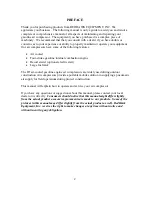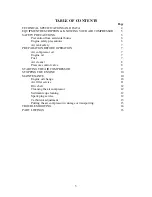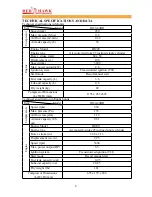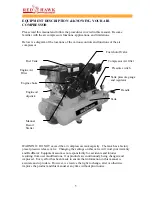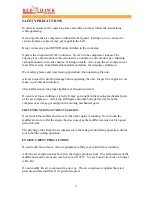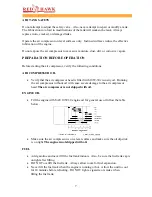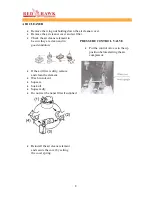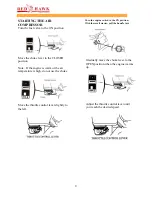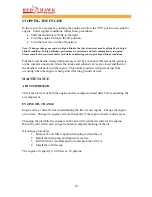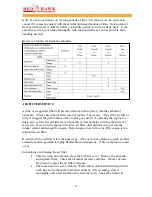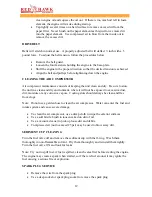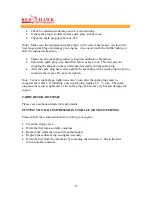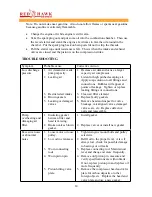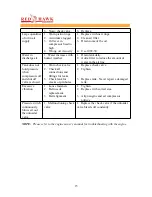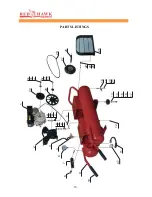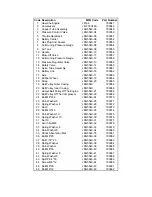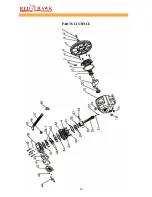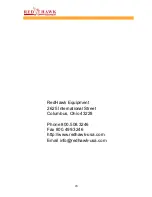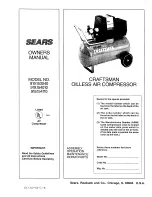
10
STOPPING THE ENGINE
In the event of an emergency, turning the engine switch to the “Off” position can stop the
engine. Under regular conditions, follow these procedures
x
Shift the throttle lever fully to the right.
x
Turn the engine switch to the off position.
x
Turn the fuel valve to the off position.
Note: When operating your engine in high altitudes, the fuel air mixture may be affected by the high
altitude condition. In high altitudes, performance is decreased and fuel consumption is increased.
Please consult with your local dealer for details on adjusting your engine high altitude conditions.
Pull the recoil handle slowly until pressure is felt by your hand, this means the piston is
on the compression stroke; where the intake and exhaust valves are closed and then let
the handle recoil back into the engine. This natural position will prevent rust from
occurring when the engine is being stored for long periods of time.
MAINTENANCE
AIR COMPRESSOR
Check the oil level of both the engine and air compressor head daily before operating the
air compressor.
ENGINE OIL CHANGE
Engine oil is a critical factor in determining the life of your engine. Change the engine
oil on time. Change the engine oil more frequently if the engine is used in dusty areas.
Changing the oil while the engine is still warm will yield best results for the engine.
When the oil is still warm, you get rapid and complete draining of the oil.
Oil change procedures
1. Remove the oil filler cap and drain plug to drain the oil
2. Install the drain plug, and tighten it securely.
3. Refill with the recommended oil and check the oil level.
4. Install the oil filler cap.
The engine oil capacity is .60 liters or .16 gallons.


